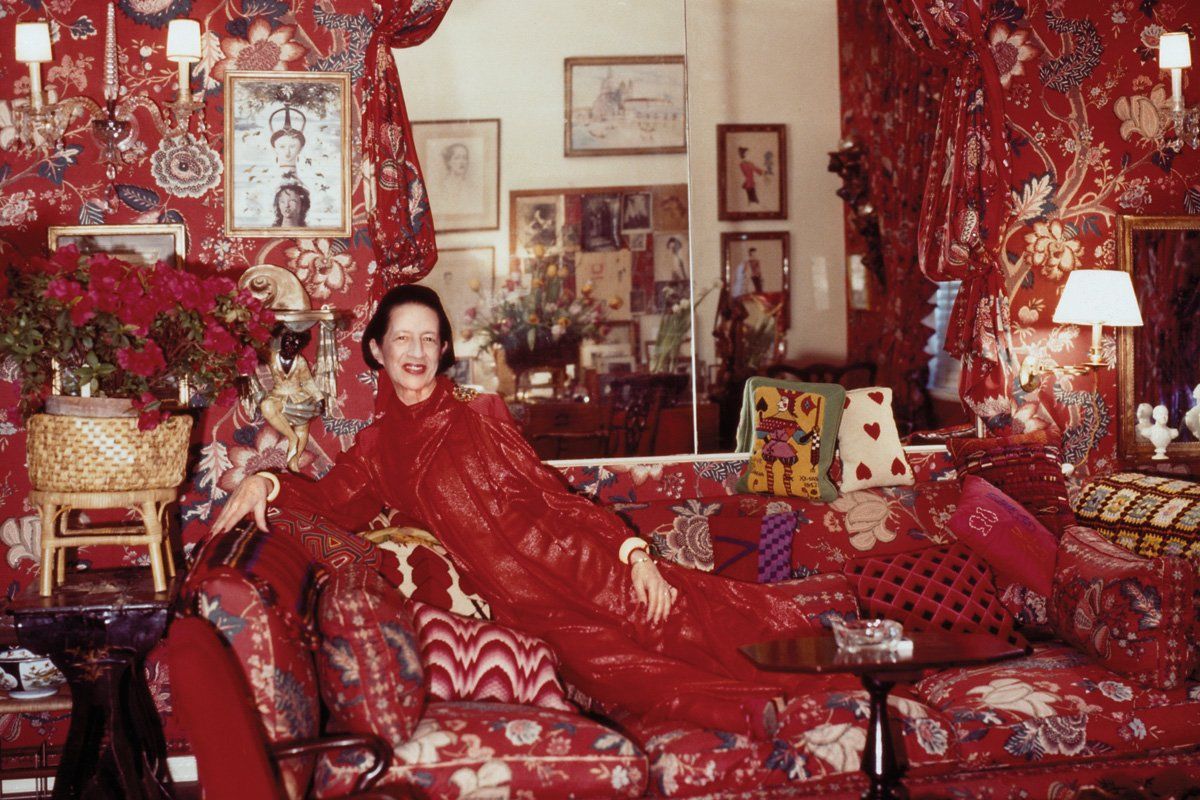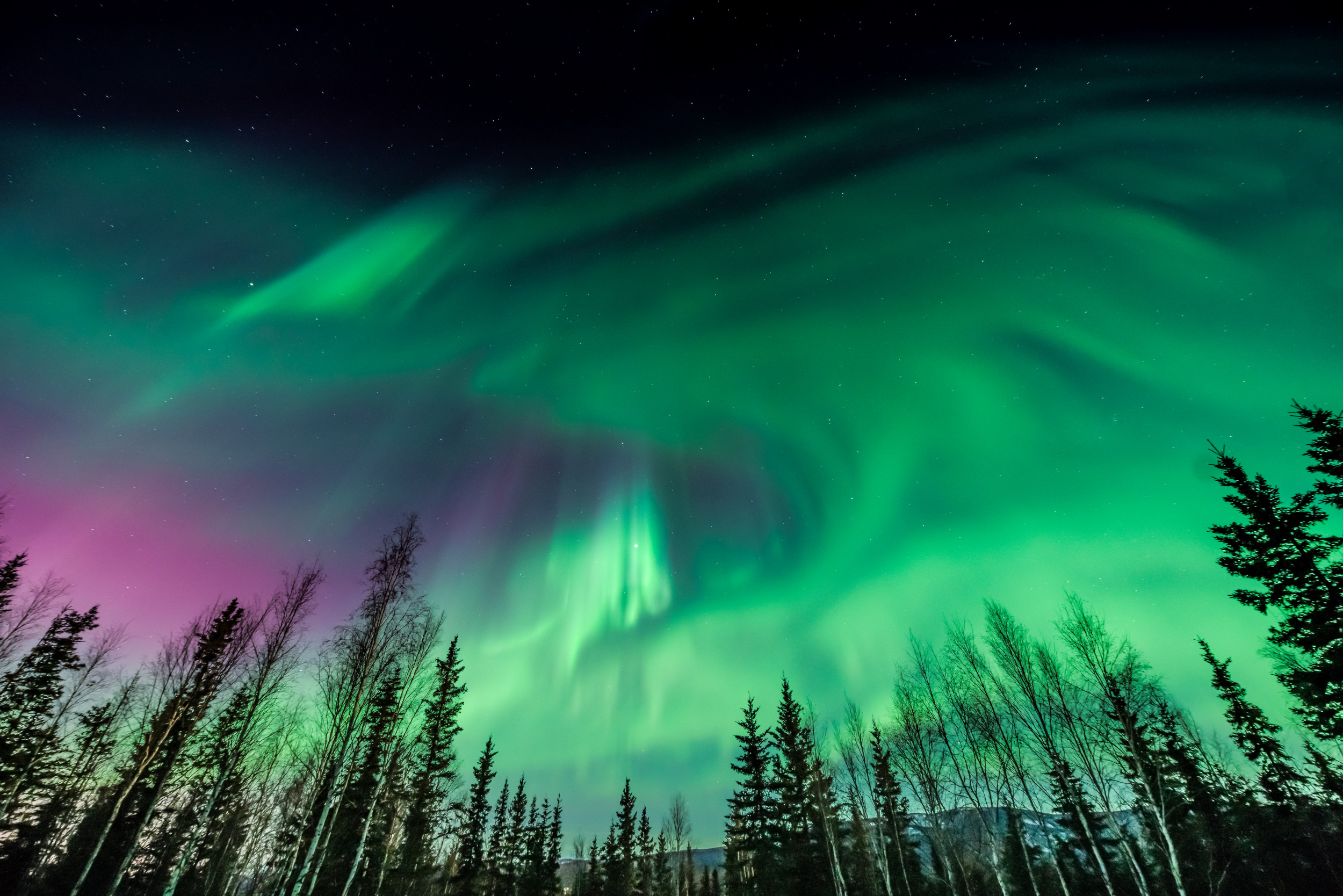
It would not be an exaggeration to say that Diana Vreeland is single-handedly responsible for the pop-culture meme that great fashion editors are flamboyant and eccentric, possess the temperaments of tyrants, and are prone to mysterious pronouncements about pink being the navy blue of India. But more important than her easily caricatured personality, Vreeland's creative gestures were so bold and sweeping that ever since she strode the halls of Vogue magazine for much of the 1960s, all other editors in chief have been compared to her.
Vreeland was the inspiration for actress Kay Thompson's imperious fashion editor in the film Funny Face. Vreeland was terrorizing assistants long before Meryl Streep made Anne Hathaway cower in The Devil Wears Prada. Vreeland was fashion's original bulldozing diva—but she wore Chanel.
Vreeland began her career as the fashion editor of Harper's Bazaar, where she first gained confidence and made a reputation as a working woman with an eye for style and a nose for what's next. But it was at Vogue, as editor in chief, that the legendary "DV" was born.
While at Vogue, from 1962 to 1971, she transformed a magazine focused on society swans and long-necked mannequins into a global souk sprinkled with Hollywood glitter. She sent a caravan of editors, photographers, and models around the world, instructing them to bring back souvenirs, stories, and elaborate fantasies that took readers outside their quotidian lives.
Vreeland was a well-traveled woman—having been born in Paris and living in London and then New York. But she often spoke about the magic of countries from Russia to Mongolia as if she had seen them with her own eyes when, instead, she had really only seen them in her imagination.
But few places could compare to Vreeland's vast imagination. In everything from the story of her life to a photo story in the magazine, Vreeland tended to exaggerate and gild the lily. Indeed, she sometimes simply made things up. Her ease with the well-placed lie was as much a secret to her success as it was a flaw.
Over the years, Vreeland has been an irresistible subject for writers and filmmakers. Indeed, her memoir, D.V., which was edited by George Plimpton, is, in some ways, her own personal tall tale. The play Full Gallop took audiences into Vreeland's red-lacquer Manhattan apartment just after she was fired from Vogue and before she became a consultant at the Metropolitan Museum of Art's Costume Institute. Full Gallop aimed to bring her spirit to life, if not tell the gimlet-eyed truth about the actual woman.
It may be that it takes the full complement of media to even get close to the story of a woman whose surface was so captivating—jet black hair, highly rouged cheeks, and a beak-like nose that plastic surgery never rendered characterless—but whose interior was so confounding. The Eye Has to Travel, a documentary by Lisa Immordino Vreeland scheduled for a limited release on Sept. 21, offers another set of clues to understanding a woman who pushed fashion into popular culture and used that culture to change the direction of fashion.

Immordino Vreeland never met her grandmother-in-law. Diana Vreeland died in 1989. So while Immordino had intimate access to the fashion icon's sons and extended family, she had a useful distance from her subject that allowed her to see Vreeland in especially clear terms. The filmmaker also boasts a fashion background and a nuanced understanding of the industry's mythmaking and social significance. Using television news clips and audiotapes from Vreeland's lengthy conversations with Plimpton when she was working on D.V., the documentary allows Vreeland to speak for herself—but it also strives to keep her honest.
Hearing Vreeland's voice with its vaguely continental accent and its alluring lyricism, it's easy to understand how she could cajole others into bringing her fantasies to life. In her earnest enthusiasm, one hears the effusive rhythms of today's fashion pop stars like André Leon Talley or Tyra Banks.
The most poignant aspects of the film are the personal meditations. Her sons, Thomas and Frederick, speak to the difficulty of having such a dynamic character as a mother. The discomforting hurt of her legendary status is evident on their adult faces. Vreeland's blunt assessment of her looks is also startling. She considers herself terribly unattractive until she meets Thomas Reed Vreeland, her husband-to-be. He makes her feel beautiful, she says. That perilous state—having one's physical confidence reliant on the admiration of another—affects her entire career. She is driven by a voyeur's judgment of beauty. Personal satisfaction in her own beauty is a struggle—one as obvious as the slash of rouge on her cheeks.
Did insecurity spark more than a little unkind treatment of assistants and junior editors? How much of fashion is fueled by insecurity—for better or worse?
And, of course, there are her lies. There are tales of Charles Lindbergh flying overhead while she sat with her boys on holiday, descriptions of a never-seen Russia. Fact did not interfere with a story or a myth. And in contemporary times, such blatant untruthfulness would be looked upon with derision. A million tweets would send scolding commentary into the universe. But Vreeland understood that fashion had little to do with truth. She glosses blithely over topics such as diversity or feminism with a kind of wry and dismissive humor.
As a piece of filmmaking, The Eye Has to Travel is not especially dazzling. But Immordino Vreeland has the patience to, at times, simply let Vreeland speak. Often she is witty. Sometimes she is heartbreaking. And occasionally she is baffling. And in her fibs, exaggerations, and outright lies, she reveals something of the complicated truth about fashion.
Uncommon Knowledge
Newsweek is committed to challenging conventional wisdom and finding connections in the search for common ground.
Newsweek is committed to challenging conventional wisdom and finding connections in the search for common ground.





